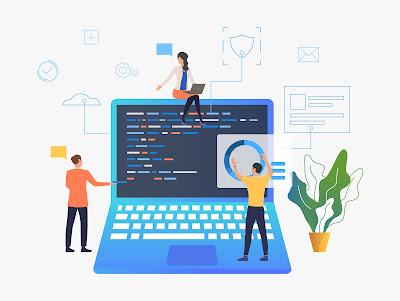How to Protect Your Tech Clients from Ransomware

Keeping your clients educated on the latest cyber threats is essential as an IT support consultancy. Ransomware is one of the most dangerous and widespread threats currently facing businesses, and it can be challenging to protect against. But with the suitable precautions in place, your clients can reduce their risk of becoming victims. This blog post will discuss ransomware prevention tips for tech businesses. We'll also cover what to do if a client does become infected with ransomware.
Ransomware may affect any business, from big corporations to small enterprises. Regardless of your customers' size or sector, they may be at risk of a ransomware attack. Smaller clients are particularly at risk since they have less security on their devices and networks than larger ones.
Fortunately, giving the correct instructions to your clients might reduce their risk and yours. Continue reading to learn how to protect and educate your customers about ransomware prevention and how to safeguard your IT company if a client attack occurs.
What information should I give my customers about different types of ransomware assaults?
If a scammer demands money for an attack and your customer does not understand that the ransom is only a portion of the overall cost, they may be unaware. Even a temporary loss of access to critical data might be more costly in the long run.
Long-term costs can be significant if a firm does not pay or pay but never receives the promised encryption key.
Cybercriminals are constantly developing new methods to profit from hacking into businesses. Educate your clients about the five primary types of ransomware assaults:
Cryptoware
Cryptoware is the most frequent type of ransomware. It encrypts data and asks for a ransom payment to restore it.
Lockerware
Lockerware (or non-encrypting ransomware) prevents access to systems and files but does not encrypt the data. A ransom is when the victim must pay money to access their computer or device.
Mobile device ransomware
Mobile device ransomware prevents consumers from using their phones by hiding malware in phony applications, infected websites, or operating system security flaws. To reactivate the gadget or restore data, a ransom must be paid.
Leakware
Leakware, also known as "extortion ware," is malware that threatens to release confidential information unless a ransom is paid. It's the polar opposite of traditional ransomware: instead of locking you out of your data, it opens it up to the public.
Master boot record (MBR) ransomware
This malware encrypts the master boot record on a computer's hard drive, preventing the operating system from even starting. To decrypt the MBR, a ransom must be paid.
The method by which ransomware assaults work is the same in every case. The first stage in a ransomware attack is to attempt to gain access to your customer's systems. It would be best to keep them from gaining entry into your system.
How to decrease the chance of a ransomware attack on your customers
Consider the possibility of an attack on your client's business in terms of "when" rather than "if."
You can't prevent cybercriminals from launching an attack, but you may make it more difficult for them to succeed.
Even if you don't provide formal risk analysis, learn about your clients' potential security flaws early in the sales process. Some cybersecurity solutions may be expensive; therefore, your clients might not have much money to spend on IT.
This feedback will assist you in developing a security package of applications and services that is accurate and on track. And to prevent your customer from becoming the target of a ransomware assault, you may do the following:
Educate and train clients
Ransomware can spread swiftly across a network, so it's critical to educate clients about IT security standards and shared risks. Clients frequently don't realize how quickly ransomware might spread. That is why, in the first place, educating them on IT best practices and typical hazards is crucial.
You could want to educate your employees on how hackers use social engineering tactics such as phishing to gain access to networks. Discuss the risks of:
- Visiting websites that I'm not familiar with
- Opening email from unknown senders
- Unanticipated files are downloaded.
- Clicking on suspicious links
- Using a weak password.
Reminders of good practices, coupled with robust spam filters and antivirus software, can go long. Make sure to educate your client's new employees and contractors and those who aren't as tech-savvy.
Maintain a strong firewall
A firewall is, without a doubt, one of the essential cybersecurity measures. However, maintaining your firewall correctly will be crucial in ensuring that it is successful.
When you alter settings, double and treble-check your work.
Anti-malware, data encryption, and email filtering software should be installed on the device.
A firewall is a castle's protective barrier, while encryption, antivirus software, and spam filters are the watchdogs that guard your moat against intruders if a firewall is used.
Install and maintain the software you suggest, and make sure clients install and keep it up to date to detect and remove malware from their network. This can be an excellent additional service for your company.)
You may also use email filters to identify emails that include malware or suspect links. Your clients most likely don't have the necessary knowledge or time (or both) to do this themselves.
Stress the importance of a VPN
Increasingly, businesses rely on remote work to operate. If your clients work remotely, make sure you use a reliable VPN.
You can also advise them to avoid using Microsoft Remote Desktop Protocol (RDP), a popular target in ransomware assaults. If they utilize it, be sure they connect via a VPN.
Keep yourself informed and protect your
network.
Keep up with your clients' operating system security updates and your own. Hackers will frequently use flaws to gain access to a network.
You can safeguard any connections by enabling multi-factor authentication and restricting network access. A ransomware assault may target remote or administrative interfaces to your primary network environment, putting you at risk.
Put them on a data backup plan.
Frequent data backups are the most excellent method to reduce the time to recover from an assault. Which backup options you employ will be determined by how much data your client has and whether it's critical, but they boil down to two alternatives:
- network-attached storage
- cloud storage
- RAID
The ideal backup operates independently of your primary network setup.
You should test your backup procedures and generate duplicates of your data regularly. These stages are crucial for establishing an effective business continuity strategy.
Discuss cloud storage security issues with clients and how encryption choices can protect data access if the cloud service provider exposes data.
Of course, encryption has certain drawbacks. Explain to your customer the disadvantages of data recovery over unsecured files.
Users may choose to encrypt just a portion of their data, such as their most sensitive data.
Stay vigilant
Keep a sharp eye out for possible indicators of an assault. Phishing attempts are frequently an indication that a cybercriminal aims to attack you or your customer.
How to safeguard your customer (and your business) if a ransomware assault is successful
Your customer may still be subjected to a ransomware assault despite your best efforts. To overcome your defenses, cybercriminals are constantly developing new techniques and malware.
If a ransomware assault occurs, it will almost certainly result in the company's activities coming to a halt. And if they pay the ransom, the expenses might be devastating.
It's also not always straightforward to get access to their data again. Recovering data and recovering from an attack might take time and money.
There's a lot more on the line for a technology firm than simply its reputation. Your client may hold you responsible.
Consider obtaining business insurance to assist you in covering your losses in the event of ransomware-related litigation.
Insurance for computer and software
errors and omissions
Businesses can purchase enterprise software errors and omissions insurance (also known as tech E&O) to protect them from client lawsuits alleging that their mistakes, oversights, or negligence caused damage.
Cyber liability coverage through Otter Tail Insurance provides third-party cyber liability coverage for legal expenses associated with a data breach, ransomware attack, or other cybercrime. Covered expenditures include:
- lawyers' fees
- settlements
- judgments
- other legal costs
Any IT business should have security procedures in place. However, these rules are especially beneficial if you have a high client risk or may be accused of failing to prevent cybercrime.
Cyber liability insurance
You'll need cyber liability insurance to safeguard you if your company is attacked, even though tech E&O covers the legal expenses of a client lawsuit.
The primary distinction between a technology E&O and cyber liability coverage is simple:
- Errors and omissions insurance covers you against injury to a third party, such as a customer.
- You're protected from financial loss due to a cyberattack.
A cyber liability policy provides first-party cyber liability coverage. This insurance covers your company's expenses for:
- ransomware demands
- hiring experts to assist with negotiations
- investigating an attack
- notifying customers
It's serious business to protect yourself and your clients from ransomware assaults. The best line of defense against a strike is to prevent one. However, you must also be prepared for the consequences of an assault.
The appropriate insurance coverage can assist keep your technology company secure from litigation and other difficulties for you to continue to grow.
We at ItsGuru specialize in providing excellent IT support consultancy in katy to our clients. We offer custom-tailored solutions for all your needs and ensure that you are satisfied with every step of the process from start to finish!


Comments
Post a Comment